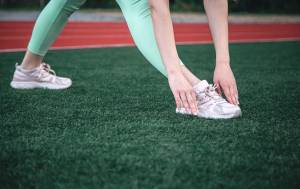Introduction to Flat Feet and Athletic Performance
Flat feet, or pes planus, is a common condition where the arches of the feet collapse, causing the entire foot to make contact with the ground. This can affect athletic performance and may increase the risk of injury. While some individuals experience no symptoms, others may face challenges that impact sporting activities.
Athletes with flat foot might notice differences in how they run, jump, or pivot. The foot’s arch is crucial for absorbing shock and providing stability during movement. When the arch is absent or not functioning properly, it can lead to biomechanical changes that affect performance.
Understanding the implications of flat feet is essential for optimizing performance and minimizing injury risks. Being informed about how flat feet influence activity is the first step in addressing potential challenges.
Understanding Flat Feet: Causes and Symptoms
Flat feet can result from various factors, including genetics, injury, or medical conditions such as arthritis. In some cases, the condition is present from birth, while in others, it develops over time due to factors like obesity or prolonged standing. Understanding the root cause can help in managing and treating the condition effectively.

Common symptoms include pain in the arch or heel, swelling along the inside of the ankle, and difficulty standing on your toes. Discomfort may also occur in the lower back, hips, or knees due to misalignment caused by collapsed arches. Recognizing these symptoms is vital for timely intervention and preventing further complications.
Not everyone with flat foot experiences symptoms or requires treatment. However, athletes or physically active individuals should monitor for signs of discomfort or changes in performance. Early detection and management can help maintain an active lifestyle without setbacks.
The Impact of Flat Feet on Athletic Performance
Flat feet can influence performance in various sports. The lack of arch support can lead to inefficient movement patterns, affecting speed, agility, and endurance. Runners, for example, may experience increased fatigue due to the extra energy required to stabilize their feet.
In sports involving jumping or rapid directional changes, flat feet can reduce power and stability. The foot’s ability to absorb shock is compromised, increasing impact forces on the joints and potentially limiting performance.
Despite these challenges, many athletes succeed by adapting their training and using proper footwear. Understanding how your feet affect performance and making necessary adjustments can help you excel without being hindered by flat feet.
Injury Risks Associated with Flat Feet
Flat feet can increase the risk of various injuries, particularly those related to overuse and stress. Common injuries include plantar fasciitis, Achilles tendonitis, and shin splints, resulting from added strain on tendons and ligaments due to improper foot mechanics.
The altered alignment caused by flat feet can also lead to knee, hip, and lower back pain. Over time, this misalignment may contribute to degenerative joint changes and chronic conditions such as osteoarthritis.
To reduce injury risk, it is essential to incorporate strength and flexibility exercises into your routine. Strengthening the muscles around the foot and ankle improves stability, while stretching enhances flexibility and reduces tension. A proactive approach can prevent injuries and support better athletic performance.

Treatment Options for Flat Feet
Treatment for flat feet depends on symptom severity and impact on activities. Non-surgical options are usually the first line and can include custom orthotics, physical therapy, and lifestyle adjustments. Orthotics provide support and help redistribute pressure across the foot.
Physical therapy strengthens foot and ankle muscles, improves range of motion, and enhances overall biomechanics. Targeted exercises address weakness and imbalance, improving foot function during sports and daily activities.
Surgery may be considered only if conservative treatments fail. It aims to correct structural abnormalities and restore proper foot mechanics, typically reserved for severe cases.
Choosing the Right Footwear for Flat Feet
Selecting proper footwear is crucial for athletes with flat feet. Shoes with good arch support, cushioning, and stability can help compensate for the lack of natural arches, reducing discomfort and improving performance. Look for shoes designed specifically for flat feet, with features like motion control and reinforced midsoles.
Ensure a proper fit by checking length, width, and arch height. A snug, comfortable fit prevents pressure points while providing the necessary support. Replace shoes regularly to maintain their supportive properties, especially if you are highly active.
Consult a podiatrist or specialized shoe fitter for personalized recommendations based on your foot structure and sport. The right footwear can enhance performance, reduce injury risk, and support long-term foot health.

Conclusion
While flat feet can present challenges for athletes, understanding the condition and implementing appropriate measures can help you continue pursuing your athletic goals. By addressing potential performance issues and injury risks, you can optimize your training and maintain an active lifestyle.
Many successful athletes have flat feet and have learned to adapt their approach to overcome limitations. With the right support, treatment, and preventive measures, you can embrace your athletic potential and achieve success in your chosen sport.
If you’re experiencing challenges due to flat feet, consult a healthcare professional to develop a personalized plan that supports your ambitions. Don’t let flat feet hold you back take proactive steps today and keep moving forward.

